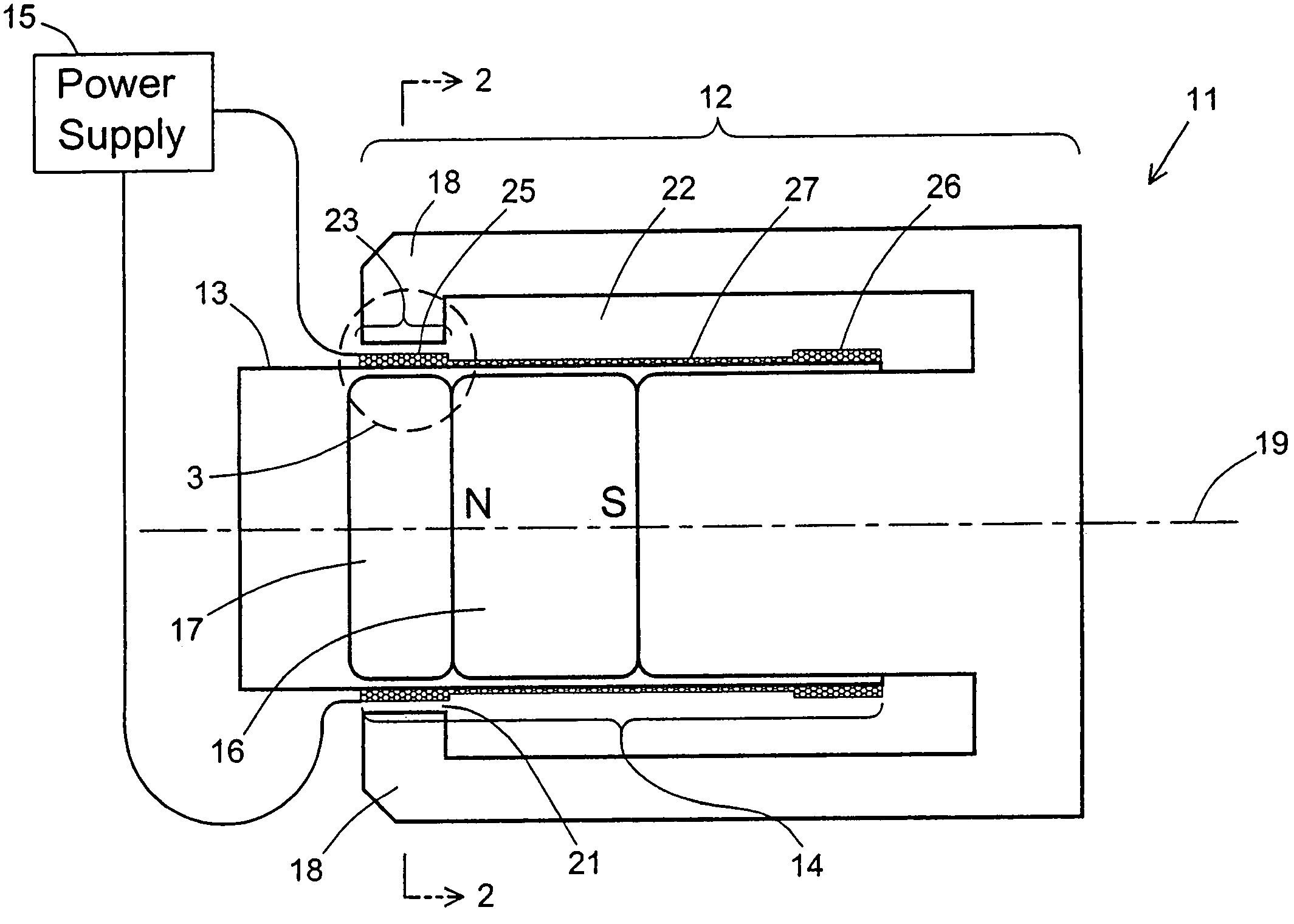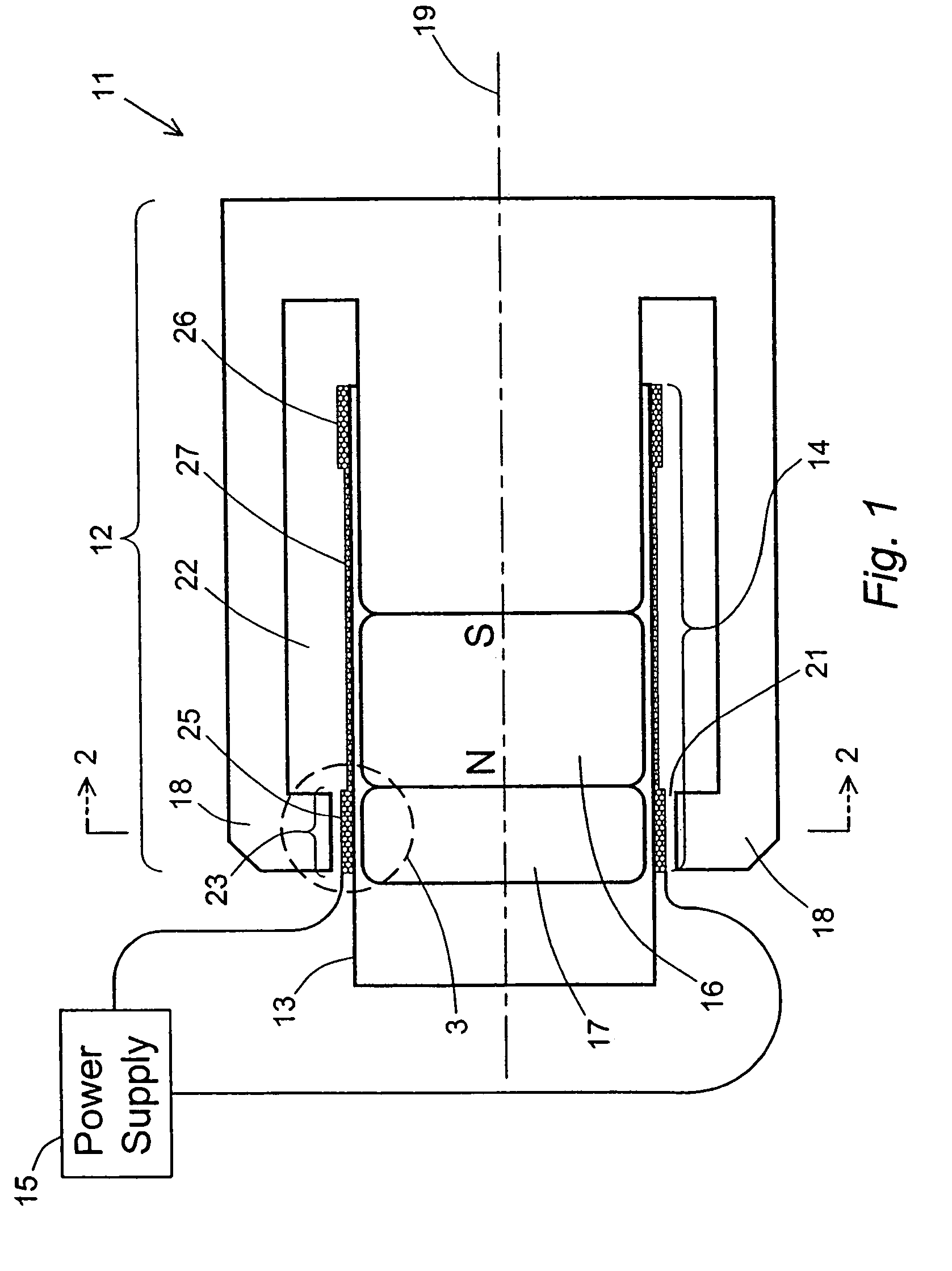Moving coil actuator for reciprocating motion with controlled force distribution
a technology of moving coils and actuators, applied in the field of scanning systems, can solve the problems of limited peak current density, temperature rise, and heat accumulation, and achieve the effects of reducing coil resistance, reducing peak current, and increasing peak curren
- Summary
- Abstract
- Description
- Claims
- Application Information
AI Technical Summary
Benefits of technology
Problems solved by technology
Method used
Image
Examples
Embodiment Construction
[0022]The electric coil portion of an actuator of the present invention includes two electric coil regions that are spatially separated, with either no coil between them or a coil of lower winding density than that of either of the two coil regions. In either case, the Lorentz force generated in the region separating the two electric coil regions is either zero or substantially and significantly lower than the Lorentz forces generated in the coil regions when those regions are in areas of concentrated magnetic flux. The expression “no coil” denotes either the absence of any electrical connection between the two coil regions or the presence of an uncoiled electrical connection, such as a straight connecting wire, that has at most a negligible effect on the motor force of the actuator. When the two coil regions are separated by a coil of lower winding density, the Lorentz force generated in the connecting region is again substantially lower than the Lorentz forces generated in the mor...
PUM
 Login to View More
Login to View More Abstract
Description
Claims
Application Information
 Login to View More
Login to View More - R&D
- Intellectual Property
- Life Sciences
- Materials
- Tech Scout
- Unparalleled Data Quality
- Higher Quality Content
- 60% Fewer Hallucinations
Browse by: Latest US Patents, China's latest patents, Technical Efficacy Thesaurus, Application Domain, Technology Topic, Popular Technical Reports.
© 2025 PatSnap. All rights reserved.Legal|Privacy policy|Modern Slavery Act Transparency Statement|Sitemap|About US| Contact US: help@patsnap.com



